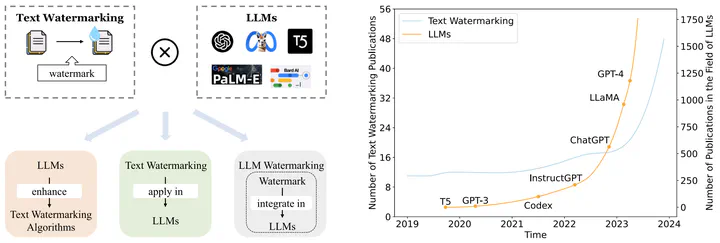A Survey of Text Watermarking in the Era of Large Language Models
 Overview of text watermarking in the era of LLMs
Overview of text watermarking in the era of LLMsThis survey paper provides a comprehensive overview of text watermarking technology in the era of Large Language Models (LLMs). The work covers four main aspects:
Text Watermarking Techniques: A detailed overview and comparison of different text watermarking methods, including their strengths and limitations.
Evaluation Methods: Analysis of how to evaluate text watermarking algorithms, focusing on:
- Detectability
- Impact on text quality
- Impact on LLM performance
- Robustness against targeted and untargeted attacks
Application Scenarios: Exploration of potential use cases for text watermarking technology, particularly in the context of LLM-generated content.
Challenges and Future Directions: Discussion of current limitations and promising research directions in the field.
The survey aims to provide researchers with a thorough understanding of text watermarking technology in the LLM era, helping to advance the field and protect intellectual property in the age of AI-generated content.